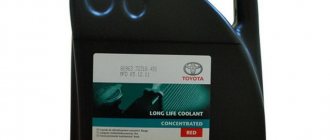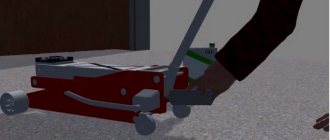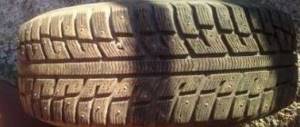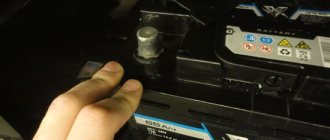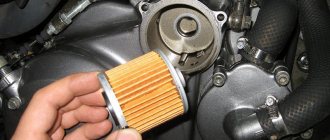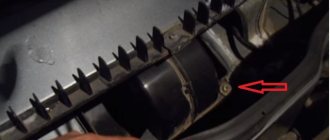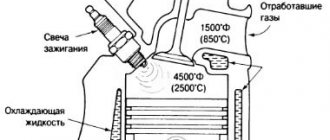What is a core heated floor?
Rod infrared heated floors are also called carbon, since carbon rods fixed to a thermal mat act as heating elements.
Peculiarities
Unlike standard radiators (find out which is better - heated floors or radiators), which cannot heat the room evenly, a carbon infrared floor provides uniform heating.
In addition, the heat is not spent on warming the air, but directly warms the objects in the room. This distribution of the thermal resource is the main difference between this model and other electric heated floors.
Another positive aspect of this floor is the self-regulation of the heat generated taking into account the temperature, that is, the system does not overheat, which means its service life is extended.
Different manufacturers produce almost the same product in terms of characteristics; they differ only in the length of the mats, power and distance between the rods.
Application
Rod infrared heated floors have high performance characteristics and are combined with basic floor coverings, therefore they have a wide range of applications:
- residential and public premises;
- gyms;
- warehouses and technical rooms.
Design
Rod-type infrared heated floors are a heating mat made of two copper current-carrying wires, which are located in parallel. In the design, heating parts - rods - are laid in increments of 10 cm.
Each includes a large number of thin carbon fiber threads coated with polyester, which increases the strength of the product and increases its resistance to mechanical stress. The gap between the spiral and the shell is filled with a material with an increased degree of heat transfer - magnesium oxide.
The rods are connected to each other in parallel with a multi-core cable, which has a cross-section of 2.5 mm and a sheath thickness of 3 mm. This method, if one section breaks down, will not lead to failure of the entire device.
The standard width of the product is 830 mm. The entire structure can reach 25 meters in length. Power consumption is 140 W/m2, working power is 105 W/m2. The degree of maximum heating of the rod is 60 degrees. The range of infrared waves ranges from 8 to 12 microns.
The system is equipped with:
- elements for connection;
- corrugated tube - for mounting a temperature sensor;
- end kit.
The mats are sold in rolls; when laying, the mats are secured with fasteners, which are sold as a set. Scotch tape is used as an additional method of fastening.
Principle of operation
The operating principle of a rod-based warm infrared floor is similar to a film floor. That is, when the rods interact with current, heat is released in the form of infrared waves.
The floor warms up quickly due to the electrical energy entering the rods. Then the heat penetrates through the finishing coating and warms people and furniture, while the heat resource is not wasted on warming the air.
A rod-type heating device, like all electric heated floors (cable or infrared), must be equipped with a thermostat and temperature sensor. It is possible to operate the floor without these devices, but the power will always be the same, and therefore no savings will be achieved.
To warm up 1 m2 of canvas, you will need from 21 to 160 W, this depends on the number of rods in the structure.
Unimat Aqua
Warm floor "Unimat Aqua" is a liquid circuit. Water is used as the liquid. It does not circulate in the system from the boiler and back. The liquid is constantly in the pipeline. Inside the pipes there is a heating cable that operates from a 220 V network. When the cable is heated, thermal energy is transferred to water, which in turn gives off heat to the floor covering.
Unimat Aqua underfloor heating does not require a traditional water heating system. There is no need to install a boiler with a mains for hot and cold water. The hydronic underfloor heating system is powered by electricity.
The main line is placed on the floor in a “snail” or “snake”. Both ends of the cable lead into the junction box and into the thermostat. To control the temperature, a sensor is installed on the floor. All conductors are insulated and led out using a probe into a corrugated tube. She runs the cables to the thermostat.
The maximum liquid temperature is 70 0C. It is recommended to set the mode to 50 0C. At the same time, the air temperature in the room is maintained at 25 0C. The power of the system depends on the length of the pipe. To heat small rooms you will need a power of 130 W. For cold rooms, warm floors of 200 W are installed.
offers various modifications of underfloor heating systems. In order to maintain a certain floor temperature in a room with central heating, heating mats are used. For large rooms, it is recommended to install a line with a coolant liquid as the main heat source.
YouTube responded with an error: The request cannot be completed because you have exceeded your quota.
- Related Posts
- How to calculate the power of a heated floor?
- How to install heated flooring in a garage?
- What types of mats are there for warm water floors?
- Operating principle of heated floors
- How to choose a thermostatic valve for underfloor heating?
- Which pipes are best to choose for heated floors?
Advantages and disadvantages
Warm infrared floors of the rod type have many advantages, and this is no coincidence, because during their development all the shortcomings of other heating devices were taken into account, although there are still disadvantages.
We suggest you read the article where the advantages of all types of heated floors and their disadvantages are revealed in detail.
Watch the video
pros
The main advantages of core floors are:
- fire safety - do not overheat and can withstand temperatures up to 60 degrees;
- moisture resistance - can be installed in a bathtub or on loggias;
- environmentally friendly - all components included in the structure are made from environmentally friendly materials;
- compatibility with various floor coverings - can be combined with tiles, linoleum, laminate;
- economical in terms of energy consumption - the power of carbon devices is 87 watts per 1 linear meter, which provides energy savings of up to 30%;
- have self-regulating properties - this allows you to set the desired temperature;
- ease of installation - even a non-professional can handle it;
- safety - do not affect human health, since there is no electromagnetic radiation;
- have a low weight - create a small load on the floors;
- are not subject to corrosion.
In addition, infrared carbon floors are suitable for installation in rooms with complex layouts and under heavy furniture.
Minuses
Disadvantages of rod structures:
- Before installing carbon fiber floors, it is necessary to dismantle the concrete base;
- Foil backing is prohibited, since aluminum is destroyed under the influence of alkali, and this will lead to malfunction;
- short service life - about 10 years;
- high price compared to other heating floors;
- the difficulty of carrying out repair work, since installation is carried out in a screed or with glue.
As you can see, carbon floors have negative sides, and they should be taken into account when choosing a model and installing it.
"Unimat Rail"
Warm floor "Unimat Rail" is presented as the most energy-saving infrared floor heating system. The system is represented by rods with filler. The rods are connected by a copper wire protected by a polymer insulating material. The filler is a carbon mixture. Its basis is amorphous carbon.
Graphite and silver are added to the mixture as additional elements. The rods are reliably protected by an insulating sheath made of Teflon. Unimat Rail has its advantages.
- The core floor is laid in a screed, tile adhesive or self-leveling floor. The thickness of the top layer should not exceed 3 cm.
- Usually the system is not installed under furniture to avoid blocking: the rods overheat, the heating turns off. Warm flooring "Unimat Rail" can be laid over the entire area of the room, regardless of the interior. There is no locking of the rods. Energy is distributed evenly within the system.
- Heating elements are able to withstand temperature loads that exceed the norm by 1.5 times.
- When overheating, individual parts of the system may turn off, but in general the heating will function in the specified mode.
Unimat Rail does not limit the consumer in the choice of finishing floor covering. For tiles, an adhesive thickness of 1 cm is maintained. When screeding, the concrete coating can reach a thickness of 3 cm. The floor covering is immediately laid on the screed. In order to direct the infrared waves upward, the rough coating is covered with a reflective screen based on lavsan fabric. Choosing a screen for saunas.
We recommend: How to check underfloor heating?
In order to heat individual areas of the room, it is recommended to purchase mats 1-2 linear meters long. m. Power 116 W per linear. m. The width of the mat is 0.83 m. The rods are located in increments of 0.1 m. This allows for good heating throughout the entire area.
If Unimat Rail mats are used as the main heating, then choose the Unimat Rail 600-700 W modification. For rooms with low temperatures, loggias or verandas, systems of 700-2500 W are intended. Heating is intended only for dry rooms. Experts say that the system will help save up to 60% energy.
Connect the Unimat heated floor to the Kaleo thermostat. The device already includes a floor temperature sensor “SF”. Be sure to use an RCD. The cable from the sensor is placed in a corrugated tube, which is also included with the thermostat.
Manufacturers (Unimat, Kaleo)
Today, among the manufacturers of carbon core heated floors, the leading Korean companies are Unimat and Kaleo.
Video
Unimat
Unimat specializes in the production of warm electric floors. Two types of rod heating devices are produced under this brand:
- Rail Unimat - has a simple design, the width of which is 830 mm. The product has a power of 120 W. Installation under tiles using adhesive or a small layer of screed is recommended.
Important! The floor covering layer must have a thickness of at least 2 cm.
- Unimat Boost is a distinctive feature of this model, the presence of a smaller pitch (9 cm). Model power 160 W. It is capable of heating a large area.
All models include mats, fasteners, wires, corrugated pipe, and the “End” kit. In addition, there is a warranty card, manufacturer’s instructions and a video with a step-by-step installation process that will help you do the floor yourself.
Kaleo
Kaleo is a leading manufacturer producing these heating devices. The company's products are high quality, long service life, reliability, and affordable price.
The products are manufactured using high-tech methods, which ensure fire safety and prevent overheating during operation.
Kaleo systems are characterized by quick installation. You can build such a floor with your own hands, without the help of specialists, within 2 hours.
There are models from this manufacturer that have increased functionality; they are also called “Smart Floors”. They are recommended for heating large areas in order to save money (cottages, offices).
Installation Features
Rod infrared floors are a multi-layer structure, which can be installed in two ways.
Laying on screed
On a screed - this means pouring a subfloor from a concrete solution that expands during the heating process. A layer of heat and waterproofing, mats, and reinforcing mesh are placed on it, on top of which a thin screed is poured and the floor covering is installed.
For your information! Carbon fiber floors without screed can only be installed on a smooth surface.
On a wooden floor
The essence of installation on a wooden floor, the method is also called laying, is to construct a “pie” consisting of an insulating substrate with a foil layer, a wooden log, a reinforcing mesh to which the heating elements will be fixed, and a finishing coating.
For your information! Do not allow the IR floor to come into contact with metal or foil coating,
Rod heated floor UNIMAT BOOST
Rod infrared heated floor UNIMAT BOOST is a revolutionary product from the well-established company Caleo. Unimat Boost has a number of advantages that distinguish this brand from the rest of the masses. Self-regulating carbon rods allow you to save up to 60% of energy. Possibility of installation both in adhesive mortar and in concrete screed under any floor covering. The high specific power of the mat - 160 W/m2 allows you to eliminate the "zebra" effect between the heating elements, as well as install the mat in cold rooms - loggias, balconies, unheated rooms.
Installation of rod heated floors
Installing an infrared rod floor is not difficult, and anyone can do it. Let's consider installing this model on a screed as a more labor-intensive method.
Work should begin by determining the location where the thermostat is attached; it should be located accessible to make it easier to extend the cable from the mat and the sensor to it. Ideally, next to the switch. When installing the floor in wet rooms, the device is taken to another room.
For your information! The construction of a rod-based heated floor, unlike other floor heating systems, does not require drawing up a mat placement diagram, since interior items of any weight can be installed on them.
If desired, you can make a schematic drawing, this will simplify the work. In addition, although this is not prohibited, there is no need to lay mats under the furniture; you can save money on this.
Material and tools
Having decided to install a rod floor, you need to buy the selected model, which includes all the components for arranging the structure.
In addition, you need to purchase:
- substrate;
- heat shrink tubes;
- thermostat;
- sleeves;
- wire for connection having double insulation.
From the tool, you should use scissors, wire cutters, a knife, a screwdriver, and tape. You will also need a hair dryer to warm up the heat-shrinkable pipes.
Preparatory work
The first stage of work is to prepare the subfloor, which must be level. If there is a cement surface, it should be cleaned and leveled, otherwise it is necessary to pour a concrete screed.
After the solution has hardened, a polyethylene film (for waterproofing) and insulation material are laid. The heat insulator should not have a foil layer, so isolon with a reflective side made of polypropylene or lavsan would be ideal.
Important! To reduce heat loss, damper tape should be glued along the walls.
System installation
Mats, pre-cut to the required length, are spread on a layer of thermal insulation, at a distance of 15 cm from the walls. They should not overlap one another; a small indentation should be made between them.
The product is fixed to the heat-insulating material using tape. The canvases are connected to each other with a special wire, it is included in the kit.
Important! For better adhesion of glue or concrete mortar with a rough base, small windows are made into the insulation in a checkerboard pattern.
Connection
Connecting a device consists of several stages:
- Installing the thermostat at the planned location.
- Electrical diagram connection:
- stripping the cable at the cut points by 1 cm;
- installing the contact (it is included in the kit) on the stripped end of the cable; it should be clamped well with pliers;
- connection to the second contact - is made by passing the wire through a heat-shrinkable tube, and bringing and fixing it to the terminal; the insulation is first removed from the cable;
- heating the heat-shrinkable tube with a hairdryer;
Thus, the entire system is assembled.
- Placement of the temperature sensor - it is better to install it in a corrugated pipe. To do this, a recess is made in the insulation layer into which a corrugation with a sensor inside is placed. A cable is pulled from the device and connected to the thermostat.
- Connection mat. The wires coming from the core floor are connected to the thermostat terminals.
At this point, the connection of the rod-heated floor is completed, and you should check its operation. The system turns on for several hours; it is possible to leave the floor on for a day.
Finish coating
The most common finish for this type of floor is tile, although linoleum or wood can be installed. To install it, it is necessary to cover the surface of the mat with a screed - this is a cement or epoxy mixture with additives.
The thickness of its layer, plus the tile adhesive, must be at least 2 cm. To add strength, it is recommended to lay a reinforcing mesh on the heating structure, on top of which the solution is poured. The system turns on only after the solution has completely dried.
For your information! Ceramic or natural stone tiles are suitable for installation on carbon heated floors. The optimal size is 30 by 30 cm, and the adhesive layer should be 6-8 mm.
The design of the carbon heated floor is convenient during installation and operation. The main thing is to choose the right floor covering that would be combined with this system.
Buying rod-based warm mats in Moscow
Brands of rod-based heated floors can be purchased in stores and online stores in Moscow at affordable prices. Let's consider the most popular and accessible:
The brand of underfloor heating called "Caleo" combines several popular core mats.
- UnimatBoost. Mat power 160 W per sq. meter. The sheet's components are made of graphite, carbon and silver to help save energy. But this is a rather expensive option compared to other heating systems. The average cost starts from 3,000 rubles per square meter of material.
- UnimatRail. Power 130 W per sq. meter. The mat elements also consist of graphite, silver and carbon and prevent loss of electricity. They are also endowed with the ability to self-regulate temperature. The mats cost approximately the same as “UnimatBoost”; the price starts from 2900-3000 rubles per square meter of material.
We recommend: What is the pipe consumption for underfloor heating per m2?
These particular brands of mats can be laid under heavy furniture and used with all types of finishing coatings.
It is worth noting that, despite the promised ease of installation of the system, it can be problematic to connect it or even design its location in the room.
If you do not have the necessary skills and abilities, you need to contact the appropriate services, which are scattered throughout the city, online and in the online stores themselves.
Keep in mind that it is better to invest in the long term once than to constantly overpay for repairs when faced with malfunctions in the system.
